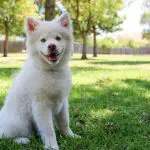Bullmastiff dog breed
Many people mistake the Bullmastiff as one of Britain’s oldest dog breeds. That is simply not the case; it is actually the Mastiff that is the oldest breed. The Bullmastiff, however, is a fairly new dog breed that has recently been created. Past history does show a few crosses between these two dogs as early as the 1790s, but there is no straight evidence that distinguishes these two strains were used to breed on.
The ultimate documentation of the Bullmastiff began around the end of the 19th century. Their function at that time period was to protect large estates from poachers that were causing major issues with gamekeepers.
To actually stop the poachers and protect the gamekeepers’ livelihoods, Bullmastiff dogs were used for guarding and protection. These animals were tough, brave, and would wait patiently until a poacher arrived, then attack on command.
Before Bullmastiffs were developed, the only dogs available for this kind of protection was the Bulldog and the regular Mastiff. The issue was that the Bulldog was not large enough and the Mastiff was not swift enough. By merging these two breeds together, the Bullmastiff was created and made the perfect land guardian.
Eventually, several breeders decided to stop merging the two strains and began breeding Bullmastiff dogs to be entirely pure. The effect was the ideal dog that is roughly 60% to 70% Mastiff and the rest Bulldog. The pure breeding effort was did quite well and by the early 1920s the English Kennel Club officially deemed as the Bullmastiff. The AKC followed with their official credit of the breed back in 1933.
Personality
The character of the average healthy Bullmastiff is considered to be quiet, calm, and extremely laid-back. These animals do not get stimulated easily, but once they are and when they are focused on an aggressor, they are very brave and can be a threat. Obviously, Bullmastiff dogs are ranked as one of the best dog breeds to have for watchdog and protection skill. They are even excellent with kids but it is highly recommended that they are raised with them rather than bringing home an adult Bullmastiff to the home with children. These animals can also be a little hostile towards strange dogs and other animals.
Taking Care Of Your Bullmastiff
Bullmastiff dogs are rather big and need exercise on a daily basis in order to keep them in top form. If they do not get enough exercise and eat too much food, obesity can become a major issue. All they need are a few long walks on the leash every day they will be okay. Bullmastiff’s do not do well during very warm weather. They are normally indoor pets and will need a huge bed to stretch out in. Bullmastiffs are known to drool often, as well as snore. Grooming is minimum, along with occasional brushing to remove dead hair.
Important Health Information
The normal lifespan of a Bullmastiff is around ten years. Vets suggest that all Bullmastiff dogs get tested for hip and elbow issues and eye issues. Big health concerns that seem to be common among this breed are CHD, gastric torsion, and elbow dysplasia. Minimal problems that may happen, but are quite rare such as: mast cell tumors, hemangiosarcoma, lymphosarcoma, SAS, hypothyroidism, and osteosarcoma.


